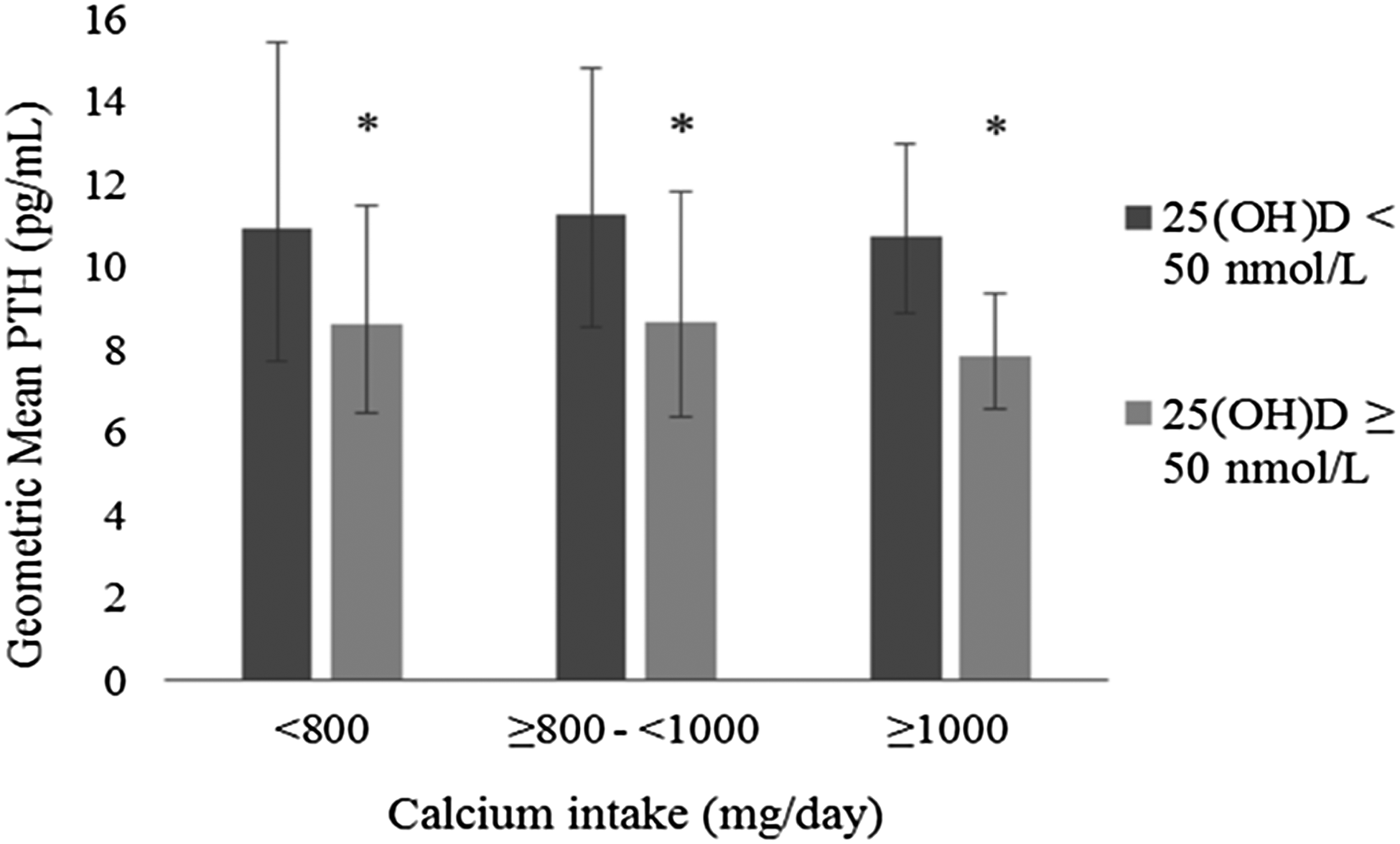Emerging evidence highlights the potential of the vitamin D and calcium metabolic system to impact pregnancy outcomes and adverse effects of vitamin D-parathyroid hormone (PTH) interactions on perinatal health have been reported(Reference Kiely, Hemmingway and O'Callaghan1, Reference Scholl, Chen and Stein2). PTH concentrations reflect homeostasis in the calcium metabolic system, and can be impacted by calcium intake as well as circulating 25-hydroxyvitamin D [25(OH)D] concentrations, reflecting vitamin D status. Little explored in pregnancy, we aimed to examine the relative importance of vitamin D status and calcium intake on PTH concentrations among healthy pregnant women.
This was a cross-sectional analysis of 142 white-skinned participants of mean (SD) 14 (2) weeks' gestation at baseline of a dose-response randomised controlled trial of vitamin D [NCT02506439](Reference O'Callaghan, Hennessy and Hull3). Serum 25(OH)D was measured by a CDC-accredited LC-MS/MS method and calcium intakes were estimated using a validated quantitative food frequency questionnaire(Reference Kiely, Collins and Lucey4). Serum albumin-corrected calcium and intact PTH were measured by colorimetric assay (Randox Laboratories Ltd.) and ELISA (MD Biosciences Inc.), respectively. Serum 25(OH)D was stratified at 50 nmol/L and calcium intakes by < 800, 800–1000 and ≥ 1000 mg/day according to the Institute of Medicine(5). After log transformation of PTH, we used Pearson's correlations and two-way ANOVA to explore effects of calcium intakes and 25(OH)D on PTH.
Geometric mean (95% CI) PTH concentration was 9·24 (8·37, 10·19) pg/mL. Mean (SD) 25(OH)D and calcium intake were 54·9 (22·6) nmol/L and 1182·5 (485·8) mg/day, respectively. 44% of participants had a 25(OH)D < 50 nmol/L and calcium intake was < 800 and ≥ 1000 mg/day in 22% and 63%, respectively. PTH was inversely correlated with vitamin D status (r = −0·311, P < 0·01), but not calcium intake (r = −0·087) or serum calcium (r = 0·057). There was no evidence of an interaction between calcium intake and 25(OH)D on PTH concentration (P = 0·941). There was a statistically significant main effect of serum 25(OH)D (P = 0·025) but not calcium intake (P = 0·822) on PTH.
To conclude, in this group of healthy pregnant women with largely sufficient calcium intake, vitamin D status, but not calcium intake was important for maintaining calcium homeostasis.

Fig. 1. PTH concentrations in 142 pregnant women stratified by vitamin D status and calcium intake.
PTH values are geometric mean (95% CI). * denotes P < 0·05





